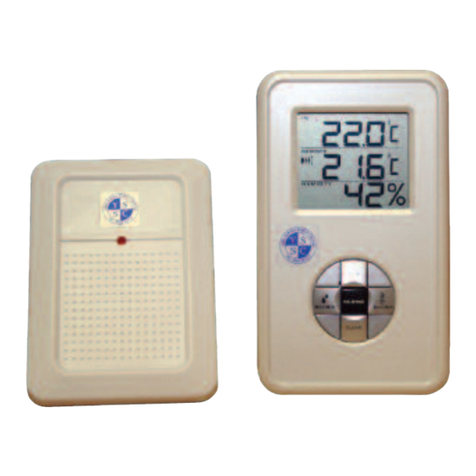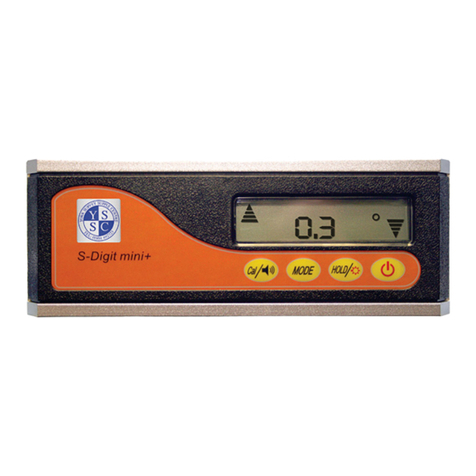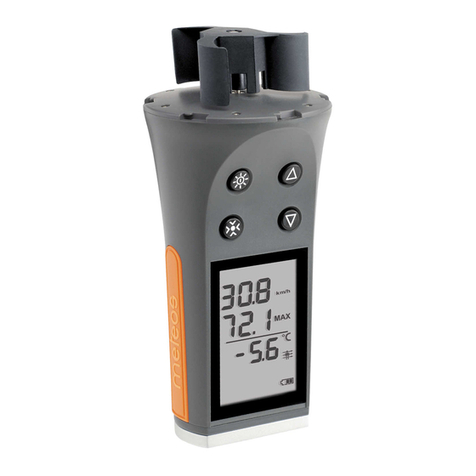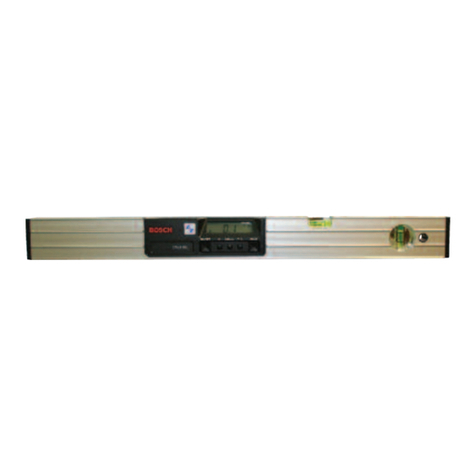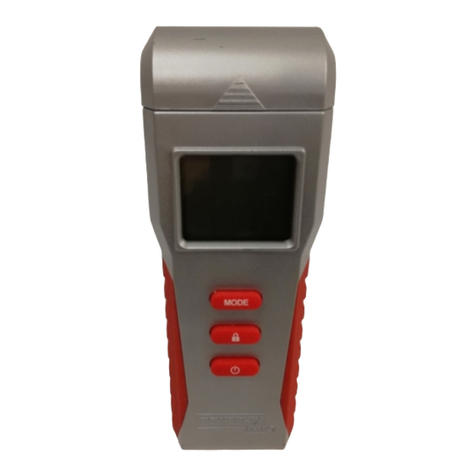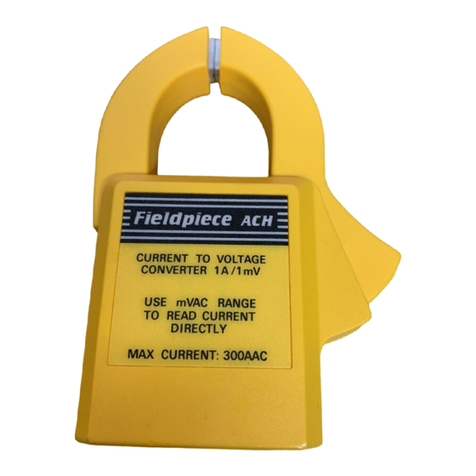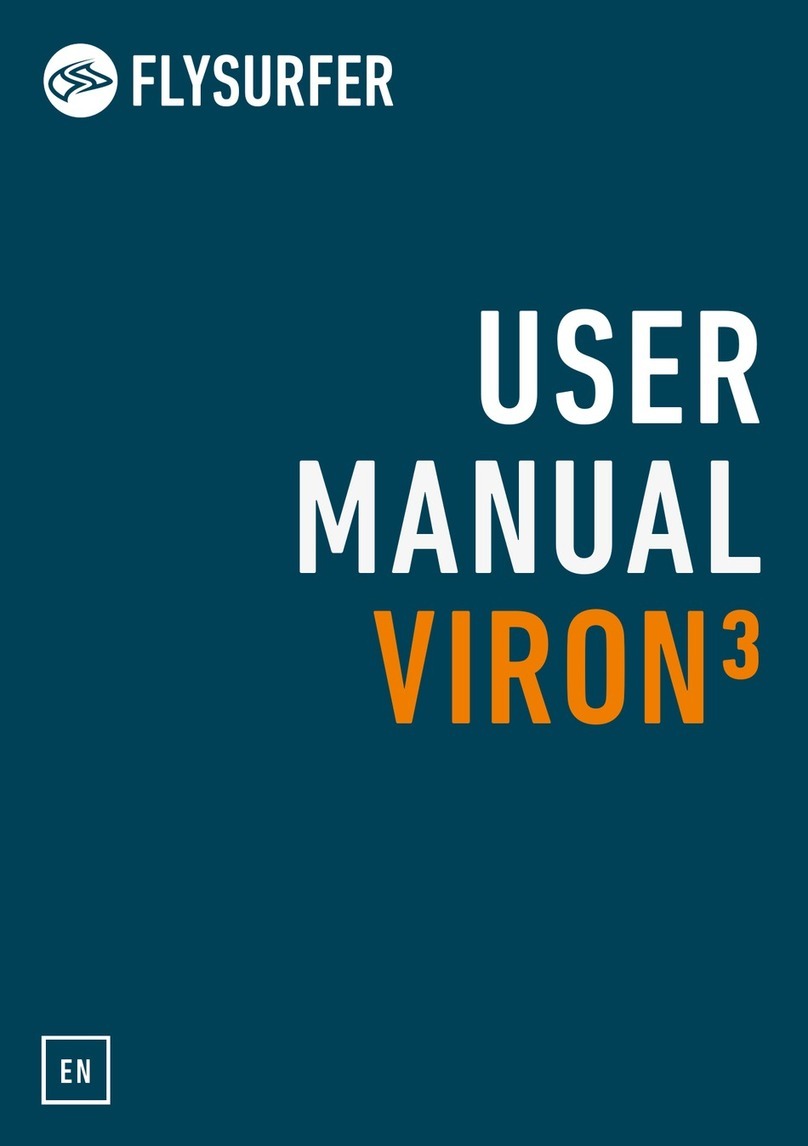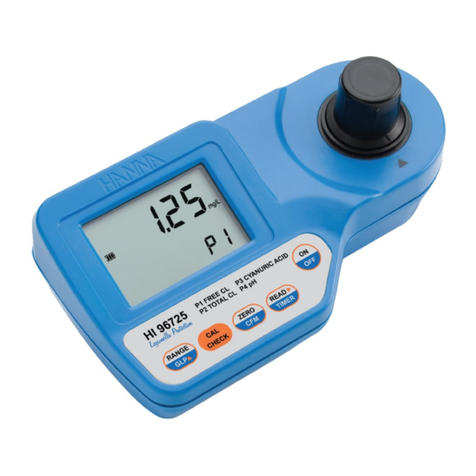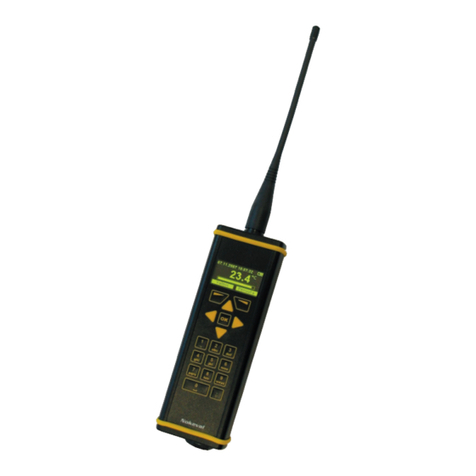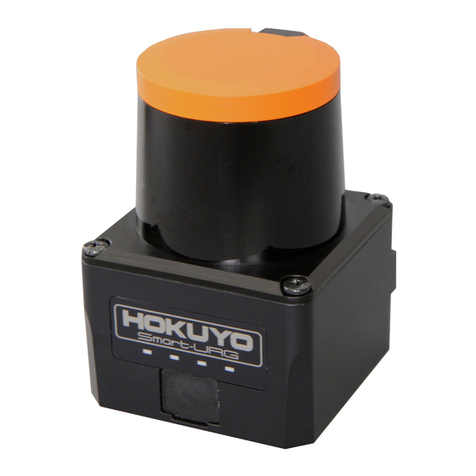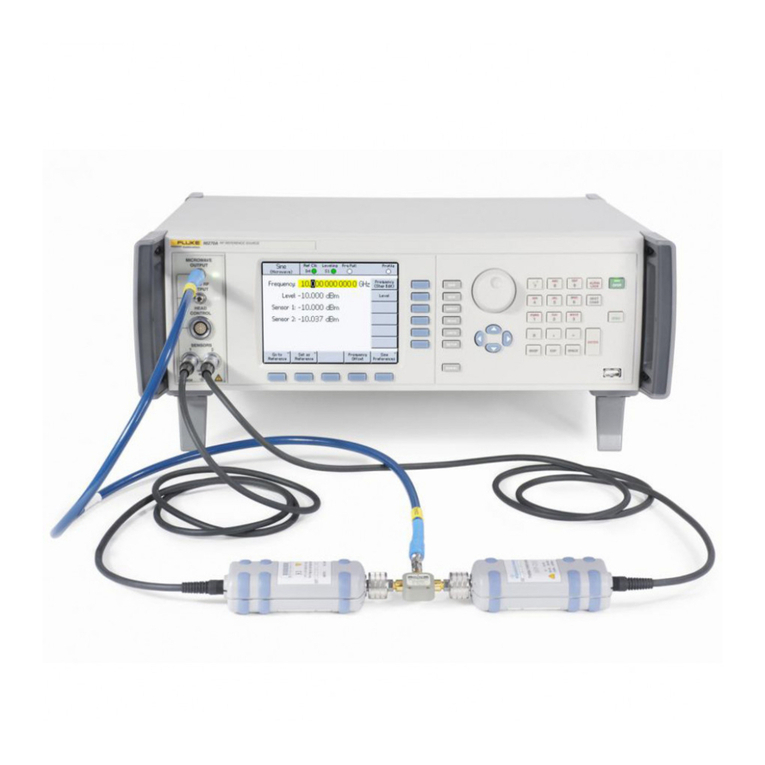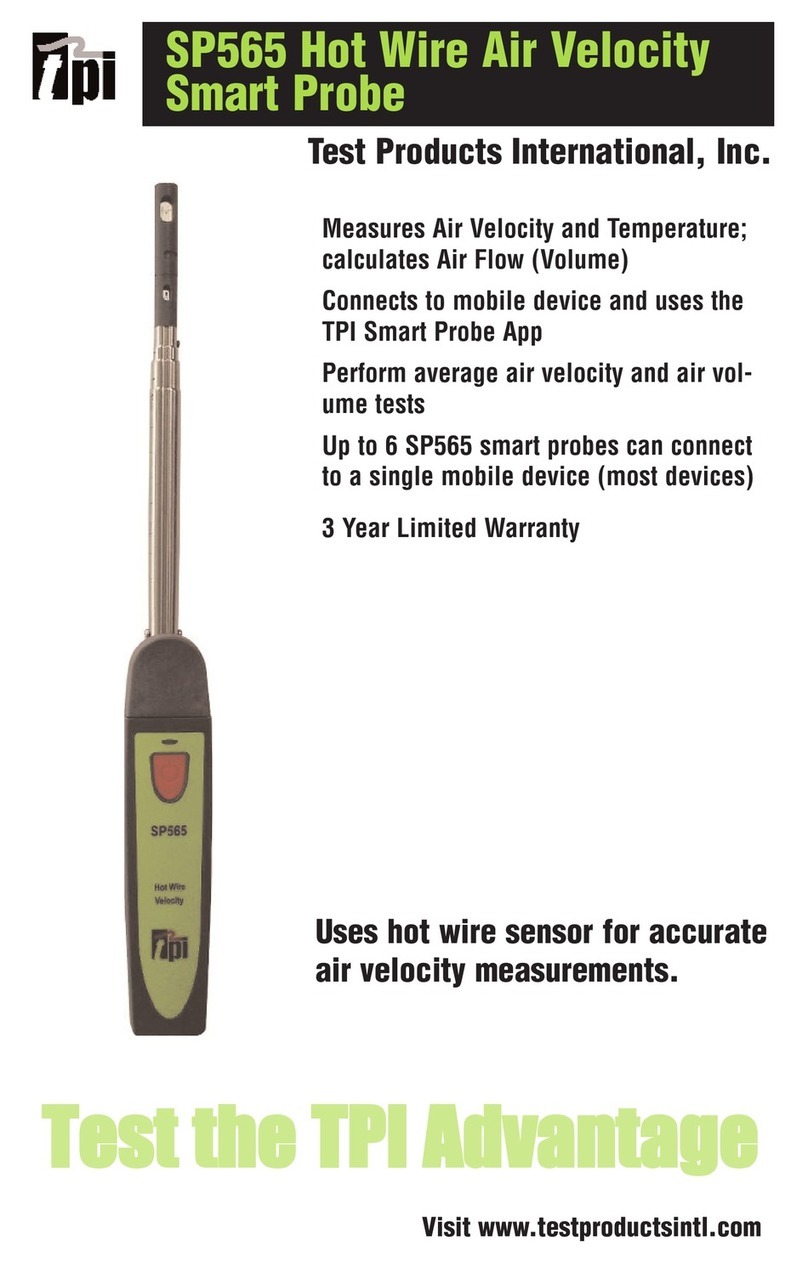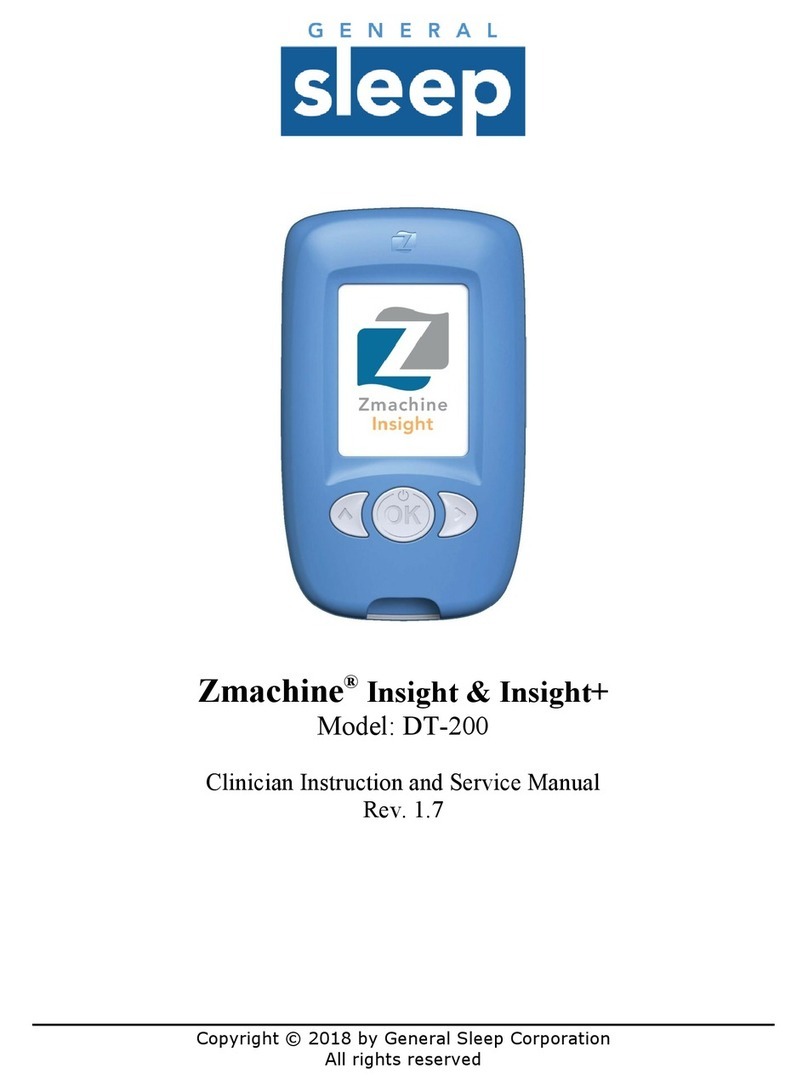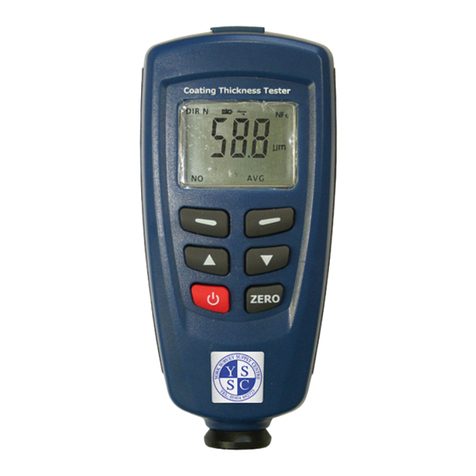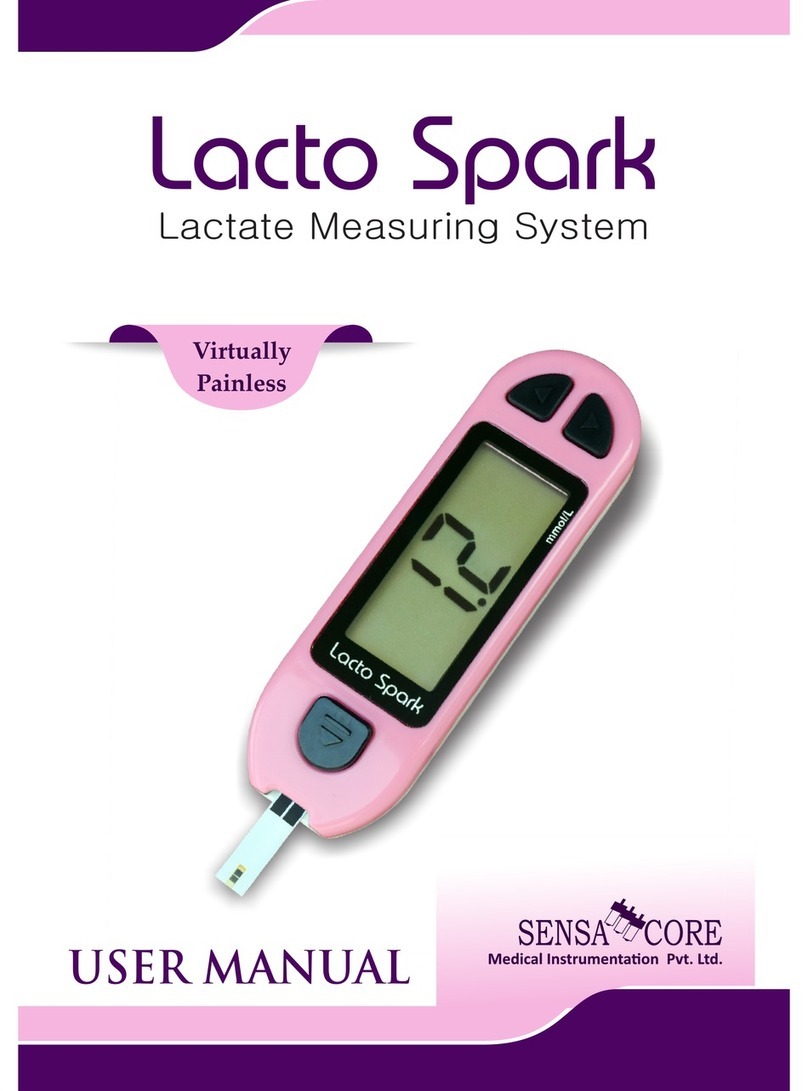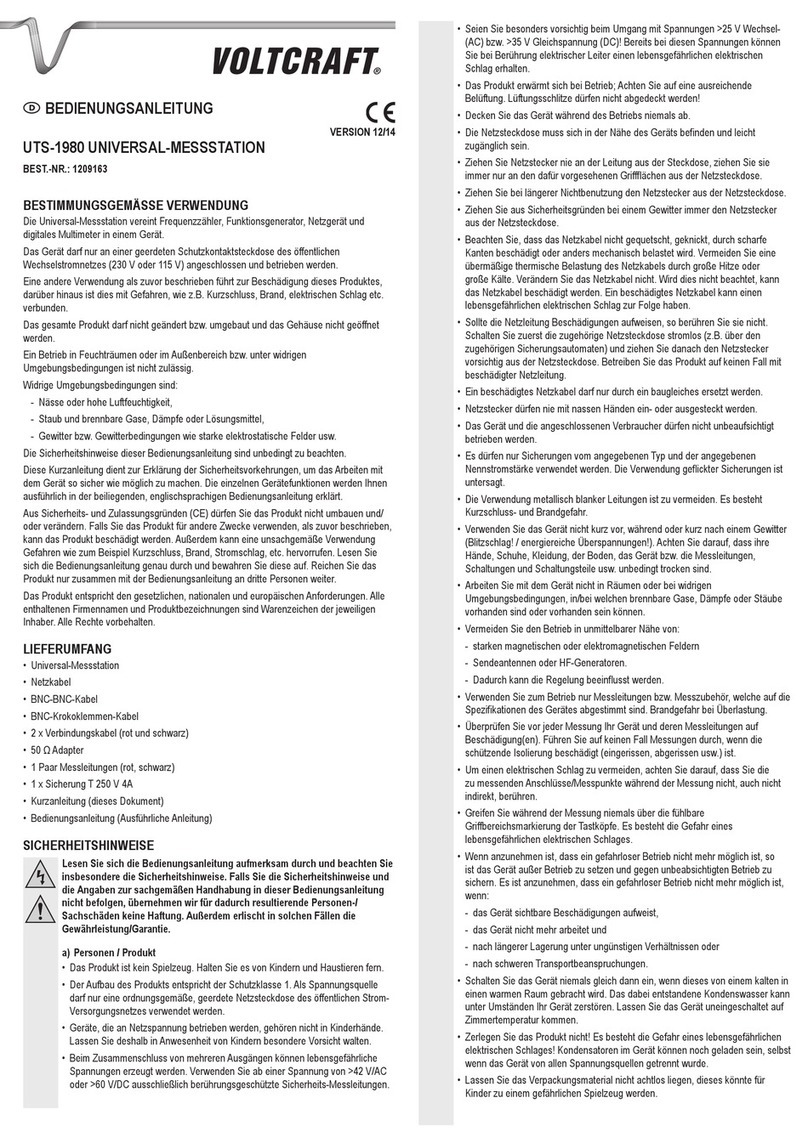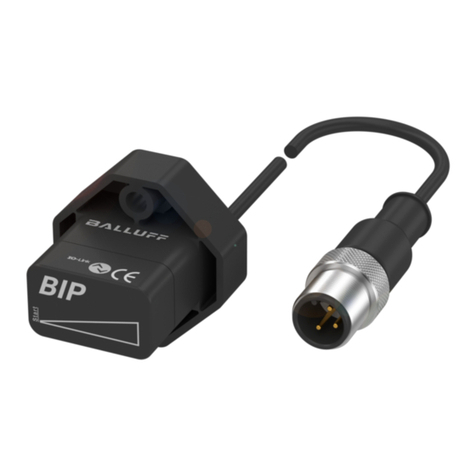
©York Survey Supply Centre 2019Ref:.. \operat98\instructions 19\343300.qxp 17-01-19
Sound Level Meter
1. Name and Functions
(1) Foam Wind Muffler
(2) LCD Screen
(3) REC Button
To record data press REC after turning the meter on. This will
automatically start recording and saving data. In order to avoid data error,
do not turn the meter off under REC condition. To stop recording press
REC. When recording has finished then it is safe to turn the meter off.
(4) SETUP Button
Hold down SETUP and continue to hold whilst turning the meter on.
When the word TIME is shown, release SETUP. This will take you into
the time adjustment mode. On the LCD screen the date should be
displayed as the following:
Press the SETUP button for a second time, the display should be
showing:
This will allow you to adjust the minutes by pressing LEVEL.
Press SETUP for the third time for the display to show this:
This will allow you to adjust the hour by pressing LEVEL.
Press SETUP for the fourth time, with the display showing:
This is the date adjustment that can be adjusted using LEVEL.
Press SETUP for the fifth time to adjust the month, adjust using LEVEL.
Press SETUP for the sixth time to alter the year using LEVEL.
To save these alterations press H LD and this will return you to the main
screen.
(5) FAST/SL W Button
This is a time weighting selection.
FAST: for fast sampling measurements at 1 reading per 125mS.
SL W: for slow sampling measurements at 1 reading per second.
(6) MAX/MIN Button
This button allows you to select maximum or minimum hold. To select
maximum press the MAX/MIN button once and MAX will show in the right
hand corner of the LCD screen. The displayed dB value will be the
maximum level recorded since activation. For minimum press MIN/MAX
again and MIN will show in the right hand corner. The displayed dB value
will be the minimum level recorded since activation.
(7) LEVEL Button
By pressing LEVEL this allows you to manually change the Level Range
Selection. Each time you press the LEVEL button the level will change
between four settings: Lo level = 30 to 80dB, Med level = 50 to 100dB,
Hi level = 80 to 130dB and AUT level. If the recorded sound is higher
than the selected level, VER will show in the right hand corner of the
LCD screen. If the recorded sound is lower than the selected level,
UNDER will show in the right hand corner of the LCD screen. When
AUT level is selected, AUT will show in the bottom left hand corner
of the LCD screen.
(8) Backlight Button
This allows you to turn a blue backlight on the LCD screen on/off.
(9) A/C Button
The A/C button is a Frequency Weighting Selection button that allows
you to change from A-Weighting and C-Weighting. When A-Weighting
is selected, dBA will show at the bottom of the LCD screen. dBC will
show when C-Weighting is selected.
(10) H LD Button
Press H LD to freeze a current reading on the display. Press H LD
again to release.
(11) Power button, Auto/Manual ff
For manual operation, press the power button and the unit will switch
on. To switch the meter off press and hold the power button. The display
will count down 3, 2, 1 and then switch off.
For auto power off, press the power button and the unit will switch on.
Press SETUP and the clock symbol will appear in the bottom left hand
corner of the LCD display. The unit will now auto power off after 15mins.
Press SETUP at any time to revert back to manual operation.
(12) External DC 9V Power Supply Terminal
For connection with a DC 9V (max 300mA) adaptor for continuous power
supply to the meter.
(13) USB Interface
For connection with USB lead to connect to the computer. The USB
signal output is 9600 bps serial interface.
(14) AC/DC Signal utput Earphone utlet
(15) CAL Calibration Potentiometer
CAL is for external standard level calibration adjustments. (Only adjust
using a traceable calibrator).
(16) Tripod Mounting Screw
(17) Battery Cover for 9V Battery
When battery is low the battery symbol will show, indicating that you must
change the battery.
(18) Microphone
½inch Electret Condenser Microphone.
2. Operating Procedure
(1) Power on the meter.
(2) Press LEVEL to select the desired measurement range, so that the
unit does not display UNDER or VER in the top right or left hand corners
of the LCD screen, as this is an indication that level you have chosen is
too low or too high for the sounds the meter is capturing or select AUT
range.
(3) Select A-Weighting or C-Weighting.
(4) Select FAST for virtually instant sound (sampling at 1 x 125ms) or
SL W for average sound (sampling changes at 1 x 1sec).
(5) To measure just the maximum or minimum sounds, press the
MAX/MIN button once for MAX, twice for MIN and three times to turn
MAX/MIN off.
3. Storing the Meter
(1) Do not store or operate the instrument in high temperature and high
humidity environment.
(2) When the meter is not in use for a long time please remove the battery
to avoid battery liquid leakage on the instrument.
(3) When using the instrument in the presence of wind it is important to
use the wind muffler to stop the meter from detecting undesirable
signals.
(4) Must keep the microphone dry and avoid severe vibration to keep the
meter in good working condition.
4. Installing the So tware
(1) Start Windows.
(2) Insert the CD into the CD drive.
(3) Go to START at the bottom of the desktop then Run... then browse
for 8852 (D:) which is the name of the software you wish to install.
(4) By clicking on 8852 (D:) it will open up the files stored within the CD.
Open the SETUP file and follow the instructions to install the software.
(5) Once this is complete you will see a green recycling symbol appear
on your desktop with 8852 underneath it. This means that installation was
successful, but before you can use the software you need to install the
hardware. Do not remove the CD.
5. Installing the Hardware
(1) With the CD for the software still in the CD drive turn the meter on
and plug the meter into the computer using the USB cable supplied with
the meter.
(2) At the bottom of the desktop on the right hand side a message will
show that the computer has detected new hardware in the USB port,
double click on this message.
(3) By double clicking on this message a window should appear asking
you to install the hardware. On this window click No, not this time as
you do not need to connect to the windows update.
Follow the instructions to install the hardware but before you press
FINISH check that it reads CP2101 USB Composite Device in the
window - this is the first hardware driver.
(4) Once you have clicked FINISH you will notice that the same box
asking you to install the hardware will appear again, this is to install the
second driver. Install in the same way as you did for the previous driver.
In the last window it should show CP2101 USB to UART Bridge
Controller. Click FINISH and both hardware drivers should now be
installed.
If you wish to uninstall the drivers in the add or remove programs you will
not find two separate drivers with the names CP2101 USB Composite
Device and CP2101 USB to UART Bridge Controller, you’ll find one
driver called CP210x USB to UART Bridge Controller. This is because
both drivers are saved together so by uninstalling this you are in fact
uninstalling both of the drivers.
6. Using the So tware
(1) Open the software and connect the meter to the computer with the
USB cable.
(2) Turn the meter on and press SETUP.
(3) On the software you will see an image of a sound level meter that
displays o Connection on the screen. To create a connection, go to Com
Port(C) and on the drop down menu select Com3(M). The sound level
meter image on the software should now be displaying the same
information as your sound level meter. In some cases this com port will
not work and Com4(4) will have to be used instead but this will work
exactly the same as it would with Com3(M) selected.
7. Recording Data
(1) With the Software
To record data using the software follow the instructions for 10. Using
the Software then go to Real Time(R) at the top of the screen and select
Setup(U) from the drop down menu and change the settings to meet your
needs, then press Start.
On the graph you will see a red line appear, which moves with every
reading detected by the meter. The graph should stop recording data
when the recording period has finished. If you wish to stop the recording
before the end of the recording period for any reason you can go to Real
Time(R), then Stop(S) or you can press the red stop sign symbol
above the image of the sound level meter.
To save the data for future reference go to File(F) Export Data. This will
automatically take you to the Save As window to save the file as a
Microsoft Excel spreadsheet. Before saving the data, change the file
name from *.xls to an appropriate name, as it will not allow you to save
the data as *.xls.
To save the data as a text file rather than an excel file, go to File(F),
Save As and change the file name from *.txt and press Save.
(2) Manually Recording Data
To record data in a different environment away from your computer, press
REC when you are ready to record, leave the meter to record for as long
as you need, then press REC when you have finished. The data will now
be stored in the meter ready for you to download directly onto the
software. ( ote: do not turn the meter off whilst REC is still showing on
the LCD screen as this could corrupt the data).
(cont...)





